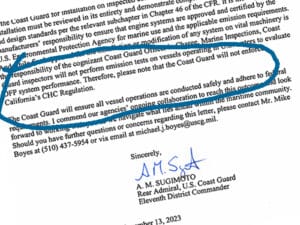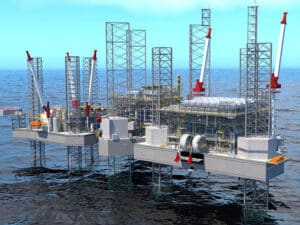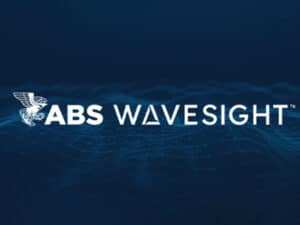
Op-Ed: Knowledge and planning are critical CII and EEXI compliance tools
Written by Marine Log Staff
Capt. Simon Hodgkinson, Head of Loss Prevention at West P&I, was at sea for 25 years rising up through the ranks, with the final 10 years as master on offshore vessels in the oil and gas sector. He then moved ashore and successfully ran the operations department for an offshore company in the Middle East for the nine years before moving to West.
by Simon Hodgkinson, Head of Loss Prevention at West P&I
Regulators are hopeful that impending Carbon Intensity Indicator (CII) and Energy Efficiency eXisting ship Index (EEXI) regulations will represent a sea change for the industry when they enter into force on January 1, 2023. Together they form the first serious set of international regulations aimed at decarbonizing the current merchant fleet, and could represent the start of shipping’s green transition.
These rules are set to create new opportunities for forward-thinking and reluctant shipowners alike. Exemplary credentials, new technologies, and innovative working practices may have a huge commercial impact and should be achievable for most – yet even rules that initially appear relatively straightforward can create clear risks.
A NEW REGIME
Both EEXI and CII create rules and standards based on the carbon efficiency of a vessel. All vessels over 400 GT and that fall under MARPOL Annex VI are caught by the EEXI regulations, while CII applies to all cargo, RoPax, and cruise vessels over 5,000 GT. While both regulations enter into force on January 1, the key dates associated with each are slightly different and will vary for each vessel.
Any ship caught by the EEXI regulations must have its carbon efficiency calculated, and implemented and certified any changes required to meet standards before its first survey date in 2023. For vessels caught by CII regulations, the owner or operator must begin measuring their vessel’s carbon intensity in operation from the start of 2023 and all ships must have an enhanced CII compliant SEEMP onboard. Additionally, standards must be reported against at yearly intervals, and plans created when a vessel does not meet those benchmarks standard.
A ship’s CII score is based on reported IMO Data Collection System (DCS) data and will be benchmarked against a letter grade range from A to E, with boundaries becoming increasingly stringent over time until 2030. A ship that scores three consecutive D grades or a single E grade will be required to develop an approved corrective action plan to improve their grade.
ACHIEVING COMPLIANCE
EEXI standards can be met by installing new green technology onboard a vessel. Yet, with deadlines steadily approaching, timelines may be tight for those finding out their scores today to use green technologies as a compliance tool: planning and securing a space at dry dock can ordinarily take around six months.
Most shipowners are set to choose a simpler option for EEXI compliance. Installing engine power limiters is a far cheaper and easier way to increase energy efficiency while also delivering a shorter installation timetable. Owners must be aware that shorter does not mean immediate; installations must be scheduled, and engineer time will need to be secured. We expect to see a peak in demand for these systems, which could stretch this capacity and cause delays, even for software-based solutions.
CII could be slightly more complicated. Beyond creating appropriate plans, benchmarking, and monitoring solutions, grades are provided based on operational performance rather than theoretical performance.
This means that shipowners are able to utilize new green technology or reduce speeds to achieve an A–C “pass” score. But they are able to do so on a more flexible deadline so long as the efficiency benefits of the system would improve the vessel’s operational average for the whole of the reporting period. With an eye to continually tightening grade boundaries, some shipowners may find it is prudent to meet higher standards early to minimise future remedial work.
However, most vessels’ final scores will ultimately depend on how they are used in operation. This may require charterers to adopt certain operational procedures and policies and may not be in the direct control of a shipowner.
THE CONTRACTUAL RISK
Shipowners are responsible for meeting EEXI and CII standards, independently of any agreements they have with charterers. This is particularly important for ships on long-term fixtures, where published statistics on a vessel used by the parties during negotiations are rendered inaccurate by a compliance method.
If a vessel’s published statistics are wrong during negotiations, and that ship cannot achieve advertised speeds, a shipowner may be in breach of contract. Similarly, if a shipowner may be in breach if a ship’s statistics change during a contract. This means that shipowners must be particularly careful when implementing EEXI compliance measures.
CII grading poses a different contractual challenge. As much of the final CII grade will rely on a ship’s operation, any operational measures – including mandating fuel types, average speeds, and efficient route management – must be specified in a contract to be binding on a charterer.
KNOW YOUR SCORE
Information is the best compliance tool a shipowner can have. Thankfully, EEXI scores are relatively easy to calculate, and most classification societies now offer online tools that will work for most ships – owners should use these tools now, if they haven’t already.
Knowing your EEXI score now provides more space to plan. This in turn can help an owner to optimise cash flow throughout any investment requirements, and to avoid any potential bottlenecks as deadlines draw near.
CII regulations create similar problems, but could be more complex. Where it is possible to roughly estimate a vessel’s operational efficiency with pre-existing data, this will not provide an accurate enough figure to dictate which letter grade a vessel will achieve and it may be difficult to understand what mitigation methods are needed. It is thus advisable that owners work with operational data providers to scope out their vessel’s actual carbon efficiency scores now.
This scoping work must also inform a contract review. Where speed may be an issue, it is important to work closely and collaboratively with charterers to find solutions that allow vessels to meet standards while minimizing their disruption – either by securing concessions to install power limiters to comply with EEXI, or to ensure certain practices are adhered to for CII.
BIMCO has recently formulated a useful template clause that can help secure EEXI compliance for new contracts, and once a vessel is compliant, future contractual issues can be avoided by ensuring that a vessel’s published statistics are up to date. For CII, it is important to ensure that clauses that require charterers to follow certain efficiency instructions are inserted into all contracts – and reviewed as appropriate, based on changes to required mitigation actions.
If this process creates any additional complication, through bottlenecks, contracts, or uncertainty, a shipowner should contact their P&I Club’s Loss Prevention department for support. At West, our Loss Prevention department is led by former seafarers, engineers and subject matter experts, and gives actionable guidance on how to cut risks for their vessel.
This advice includes immediate practical guidance to crews and operational staff on how to comply with new rules, advice on new technologies and any risks that come alongside them, and bespoke advice on any complex contractual issues associated with CII or EEXI.
The best way to ensure smooth and cost-effective compliance to any new regulation is good planning. This is especially true for EEXI and CII, which will require shipowners to use data that they may not yet have access to – and could cause unforeseen contractual disputes. Starting work now is the best way to build these plans, and to navigate these risks.




